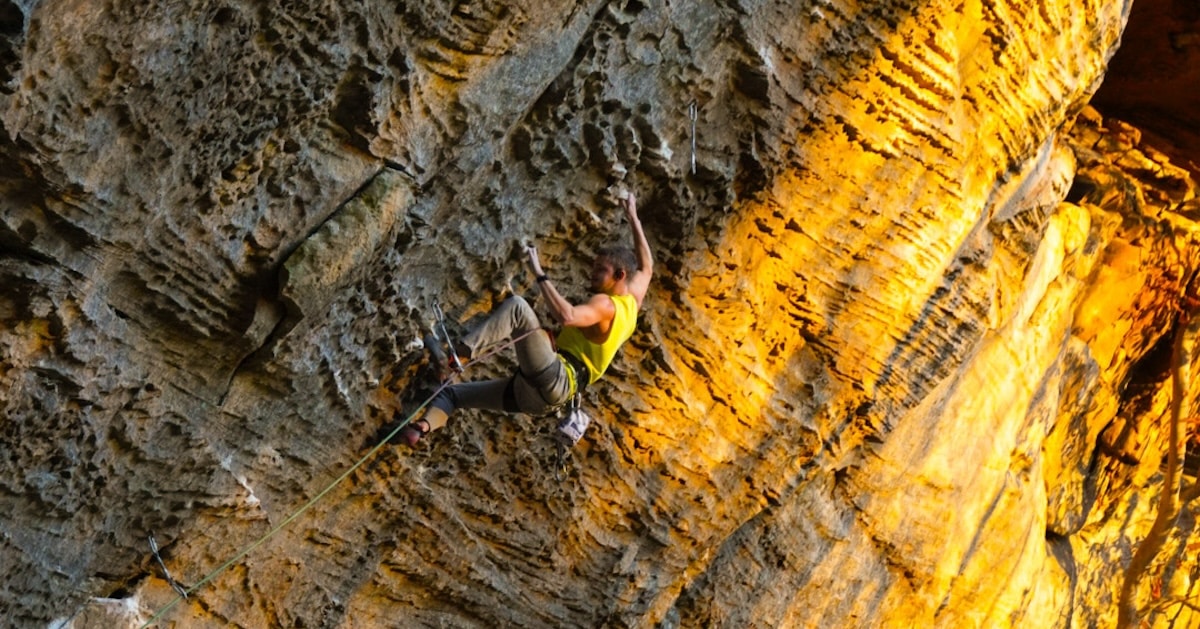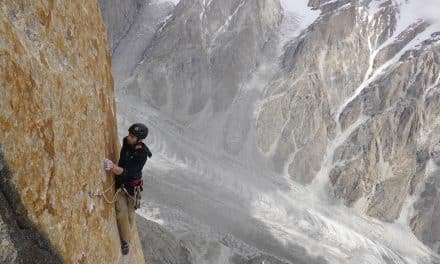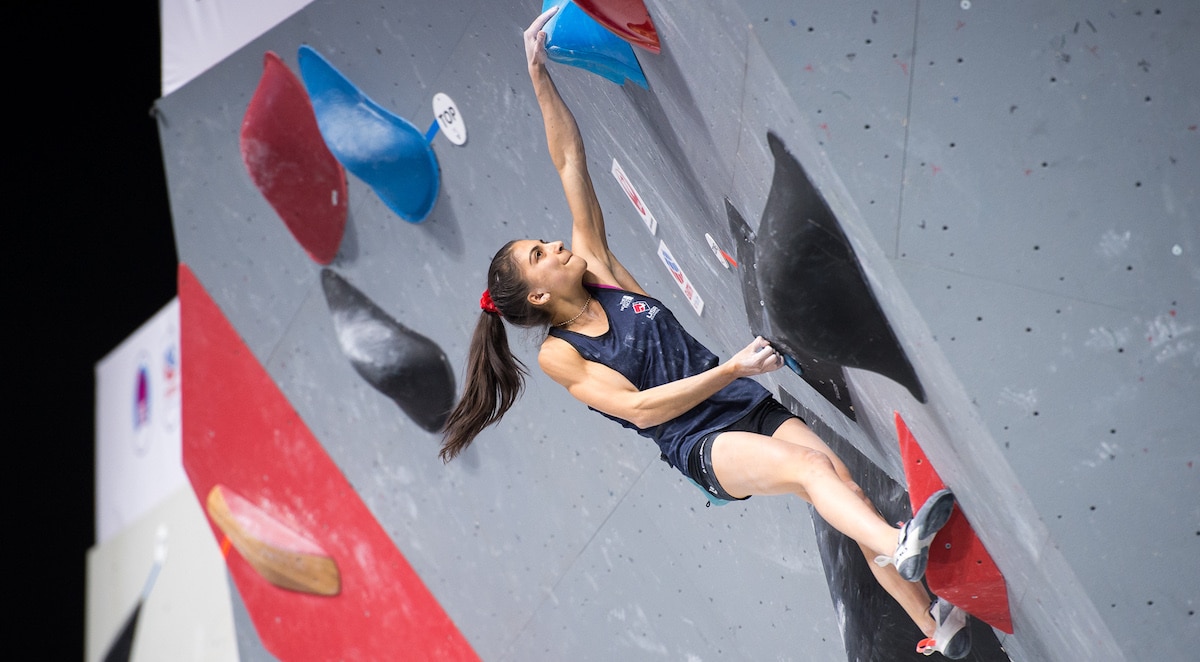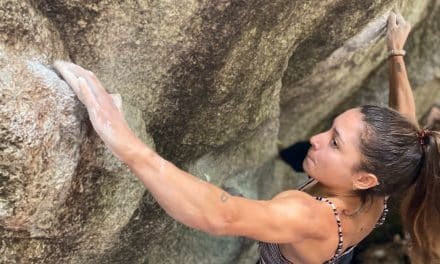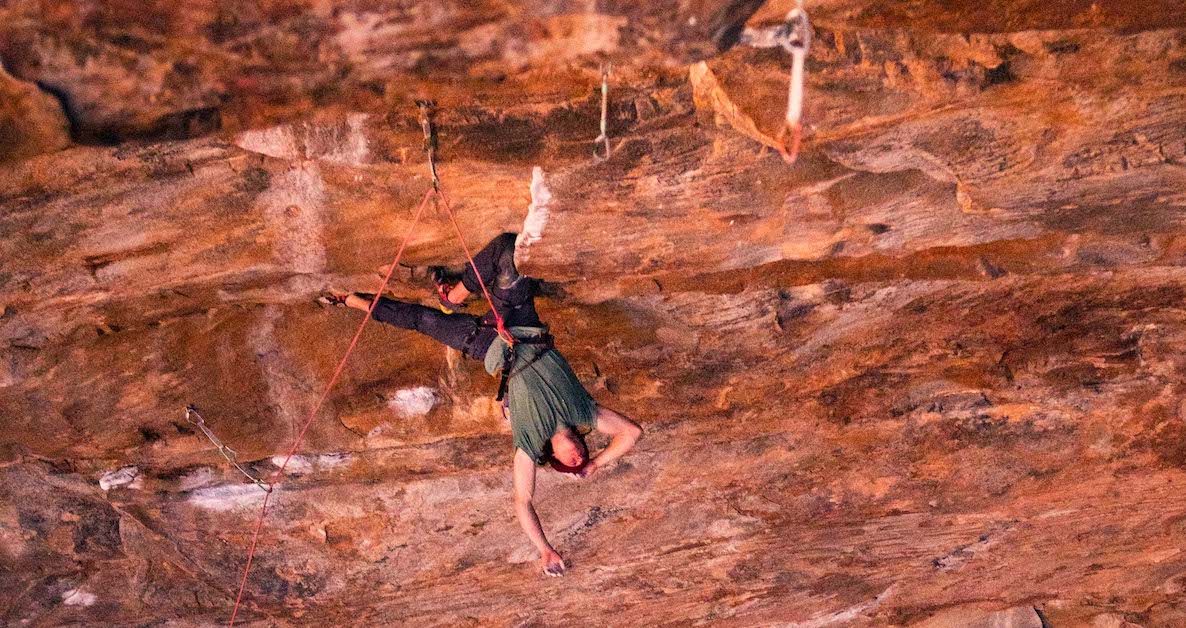Almost any fit person can reach 5.13 given enough time, effort, and intention. But life doesn’t always allow for taking the slow road to this iconic benchmark grade. Learn how to climb 5.13 faster through the lens of Derek Childers, a Kentucky climber who escalated through the grades with earnest.
PhysiVāntage athlete Derek Childers jumped two number grades to climb 5.13 in three years, practically on the dot.
That’s a pretty impressive rate of improvement in a sport that’s still too new, in the grand scheme of things, for anyone to understand exactly what’s involved in plotting a steady upward trajectory. We can treat stories like Childers’ as case studies that help us all learn more about how the everyday climber can accelerate through the grades.
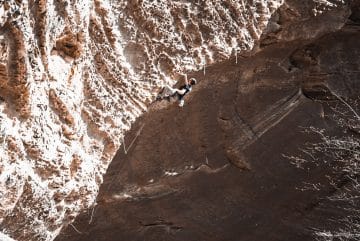
Derek Childers at the Red River Gorge.
Childers didn’t sacrifice the rest of his life for the sake of climbing. That’s what makes him such a strong role model for the climbing community. It’s a privilege—and a risk—to go “full send” into any one thing, especially something as relatively niche as climbing. Those who can’t afford to take that route might wonder if they left their potential on the table by not putting their passion above all else.
But Childers proves that excitement and intention might matter more than spare time. Channeling his mental energy effectively saves him enough that he’s not left wanting for more. This ever-eager attitude keeps Childers from falling into the kind of ruts that trigger stagnation more than any time constraint. Borrow some of his stoke to see faster growth in your own climbing, and climb 5.13 more swiftly!
The Timeline to 5.13
Childers grew up a stone’s throw from the Red River Gorge in Beattyville, Kentucky without ever knowing how close he was to world-class climbing—or what climbing even entailed. “I worked at Natural Bridge State Resort Park in high school and ate at Miguel’s all the time for lunch,” he laughs. “I thought all the climbing gear hanging on the walls was for decoration!”
It took until the final semester of his Master’s program at the University of Louisville for Childers to catch onto climbing. He needed one more single-credit class to keep his scholarship. Intro to Climbing just so happened to fit into his schedule—and that’s all she wrote.
The climbing gym became his second home. “I learned how to lead the summer of 2016,” he says, “but only went outdoors once that year. I started spending more time on real rock in 2017 before sending my first 5.11a, Linear Regression, in May of 2018.”
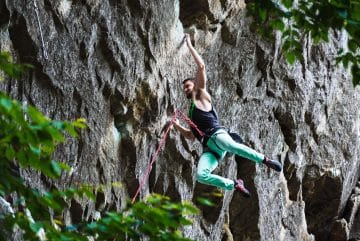
Derek Childers holding off the dreaded barn door!
Childers struggled with his mental game from the beginning. He found himself too terrified of falling to even think about pushing himself to that point until he began projecting Linear Regression. His hesitance on the sharp end, on top of his lack of training structure, kept his progress slow from there. Childress spent the entire next year working toward taking the next step to 5.11b. “I knew something was going to have to change to get the next grade of 5.11c,” he explains. “This is where I caught the training bug!”
Once he let the training bug in, it spread quickly. He sent his first 5.11c on March 1, 2020. The fall saw his first 11d before he ticked his first 12a the very next weekend. Childers took down 12b and 12c over the course of 2021, then skipped straight over 12d to climb 5.13 in March of 2022. The following March, he projected Kaleidoscope (13c) alongside Eric Hörst and sent almost exactly a year after that initial breakthrough into 5.13.
“After that I finally went back and sent my first 12d,” Childers chuckles.
Training and Tactics
Childers’ climbing progress took off as soon as he infused more structure into his schedule. He found his sweet spot in periodized, block-style training. Childers dedicates certain times of year to certain training focuses. “I typically take the summer for my strength and power phase. August through October is for aerobic building and aeropower. Then, in November, I build some power-endurance in time for a performance phase from December through April.” He likes to close out the cycle with a month of “fun climbing” on the road.
Notably absent from Childers’ climbing routine is an abundance of outdoor days. He tries to spend one weekend day outside during his performance phase and two in the climbing gym or his home gym. The balance allows him to get sufficient practice on his projects without sacrificing peak strength, power, and technique. Climbers who make a full transition to outdoor climbing during performance phases tend to lose some of that edge throughout the projecting process. For some, progress on their project is worth the loss of overall climbing capacity. But Childers prioritizes his growth beyond any particular project just as much. Given his track record, the two seem to go hand in hand regardless.
Childers admits that other aspects of his training took a bit longer to hone in on. “My mental game took forever to get to where I wanted it,” he acknowledges. “It was always around falling at first, but in 2020 I was able to get over this with the help of my friend John Morris, who told me to think about pushing until I fell. With that, I flipped this switch there and now never think about falling. I even skip clips sometimes, like the last bolt of Kaleidoscope.”
But after that, Childers says that he struggled with activating “try-hard” mode. “Of course I get pumped and fall or handcuffed because I’m powered down, but I rarely tapped into true maximum energy. My friends tell me that it’s because I’m too chill and don’t have that killer instinct,” he laughs. But he’s since reached that point a few times—just enough to understand that the feeling of draining the tank completely is one of the most powerful takeaways climbing has to offer. He’s now intent on creating more of those 100% all-in experiences.
Childers also prioritizes longevity and consistency in his climbing. After a a complete rupture of his A4 pulley in 2019, he started taking Supercharged Collagen into his diet. “I haven’t had an injury like that since then,” he says. “I take it religiously and really think it supports the most important body part on the rock: the fingers!” With a daily dose of collagen, Childers finds that he can show up to his training and climbing sessions with more resilience.
The X Factor to Climb 5.13
Childers doesn’t necessarily believe that his approach to training is all that special. His real “X Factor” comes down to curiosity. He possesses an insatiable interest in absorbing every possible nugget of information about climbing that he can, from all possible sources and angles indiscriminately.
“I have this willingness to learn constantly,” he exclaims. “I read books, articles, and training posts from pros more than anything else, and listen to so many podcasts like Training for Climbing, The Struggle Climbing Show, Lattice Training Podcast, The Power Company podcast and more so I can always be gaining more knowledge on how to train and prepare for my projects outdoors.”
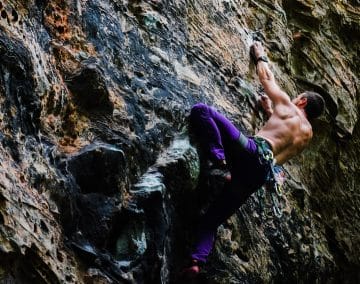
Derek Childers pulling onto the face.
He finds that his curiosity for how others solve climbing problems and train to bring out their best never wavers. Absorbing new, and sometimes unconventional, tactics led him to climb 5.13 faster because he wasn’t bogged down by rigid expectations or limiting beliefs. Beyond that, he doesn’t let his ego get in the way. Nothing is too simple, too complex, too overrated, or too understated for him to explore. Such a “no stone left unturned” sentiment means Childers won’t let any potential for growth slip past him.
With that in mind, consider all of the ideas you might have written off over the years before giving them an honest try. What if one of those missed connections would have unlocked a door you never even knew was waiting to be opened? Embrace new information with a beginner’s mindset. Give new concepts enough of an effort to crack the surface. We’re all still figuring out this whole training for climbing thing, and you never know what or who might help you stumble upon the perfect set of strategies for you to climb 5.13…and beyond!
Related Articles:
- Free Training Programs for Climbers
- The Road to Climbing 5.13a With Ryan Devlin
- How Coach Eric Hörst (Quickly) Sent Kaleidoscope (5.13c) After Injury
- How Tyler Thompson Masters the Art of Sending Quickly
- 10 Do’s and Don’t for Effective Redpoint Climbing
Copyright © 2000–2025 Lucie Hanes & Eric J. Hörst | All Rights Reserved.

